Unlocking a Honeywell alarm keypad is a fundamental skill for homeowners and security system users, enabling access to the system’s controls and settings. Honeywell, a trusted provider of home security solutions, offers intuitive keypads with user-friendly interfaces for convenient operation.
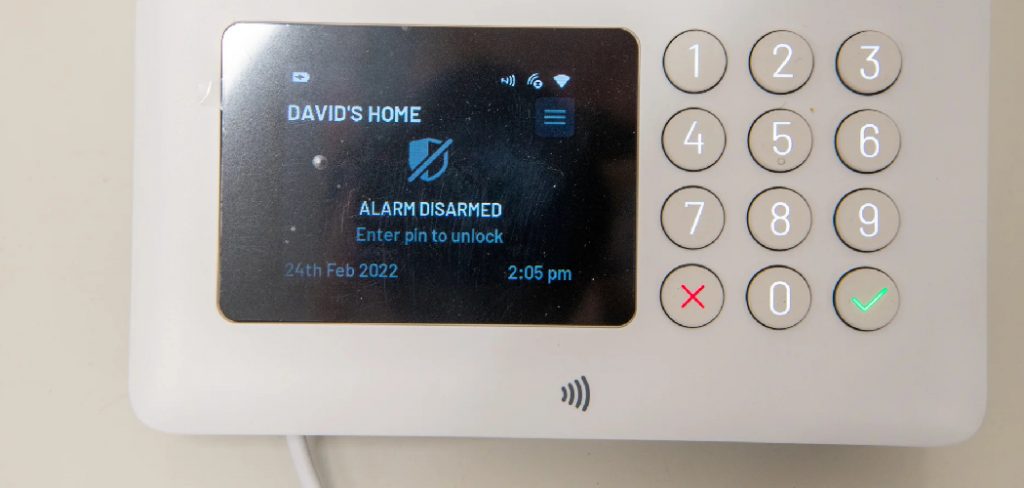
Whether you’re arming or disarming the system, adjusting settings, or troubleshooting issues, knowing how to unlock your Honeywell alarm keypad correctly is essential for maintaining the security and functionality of your home security setup.
In this comprehensive guide, we’ll explore the step-by-step process of how to unlock honeywell alarm keypad, covering various keypad models and common scenarios to ensure that users can navigate the unlocking process with ease and confidence.
Understanding these techniques empowers homeowners to effectively manage their home security system and enjoy peace of mind knowing that their property is protected against potential threats.
Importance of Knowing How to Unlock the Keypad
Knowing how to unlock your Honeywell alarm keypad is crucial for several reasons. Primarily, it empowers homeowners and users to take full control of their security system, allowing them to arm and disarm the system as needed rapidly. This capability is vital in preventing false alarms, which can be stressful, disruptive, and in some cases, costly if local authorities are dispatched unnecessarily.
Furthermore, understanding how to access and adjust the system’s settings ensures that users can customize their security measures to fit their specific needs and lifestyle, enhancing the overall effectiveness and efficiency of their home security.
By mastering this skill, users also gain the ability to promptly address and troubleshoot any issues that may arise, minimizing downtime and ensuring continuous protection.
In essence, the knowledge of unlocking the Honeywell alarm keypad is a foundational aspect of managing home security systems effectively, maintaining a secure environment for oneself and one’s family.
Keypad Components and Functions
The Honeywell alarm keypad comprises several components, each serving a unique function to facilitate user interaction and system management. The primary element is the numeric keypad, utilized for entering access codes and navigating menus. Above the numeric keys, you’ll typically find the “Arm” and “Disarm” buttons, allowing for quick system activation and deactivation.

LED indicators or a backlit LCD screen display the system’s status, alerting users to security breaches, battery status, and connectivity issues. Function keys, often located around the perimeter of the numeric keys, provide shortcuts to specific settings and features, such as bypassing zones or accessing the event log.
Modern Honeywell keypads may also include touch-sensitive screens, replacing traditional buttons with a more intuitive interface, making navigation and operation more streamlined. Understanding these components and their functions is crucial for efficient system management and ensures users can leverage the full potential of their security solutions.
Common Reasons for Keypad Lockouts
Keypad lockouts can occur for several reasons, impacting users’ ability to access their Honeywell alarm systems. One frequent cause is the entry of incorrect access codes multiple times in succession. This security feature is designed to prevent unauthorized access but can inadvertently lock out legitimate users who have forgotten their codes or entered them inaccurately.
Another common reason for lockouts is the failure to change default access codes, making the system vulnerable to lockouts if the codes are discovered or guessed by unauthorized individuals. Power disruptions can also lead to keypad lockouts, especially if the system’s settings are reset or if backup batteries are depleted, necessitating a system reset or code re-entry upon power restoration.
Additionally, hardware malfunctions, such as keypad wear or damage, can interfere with code entry, leading to lockout situations. Understanding these common causes can help users take preventative measures and respond effectively if a lockout occurs.
Signs that the Keypad is Locked
Identifying when your Honeywell alarm keypad is locked is crucial for timely and effective troubleshooting. One clear sign of a keypad lockout is the inability to input codes or make selections, with the keypad not registering any button presses.
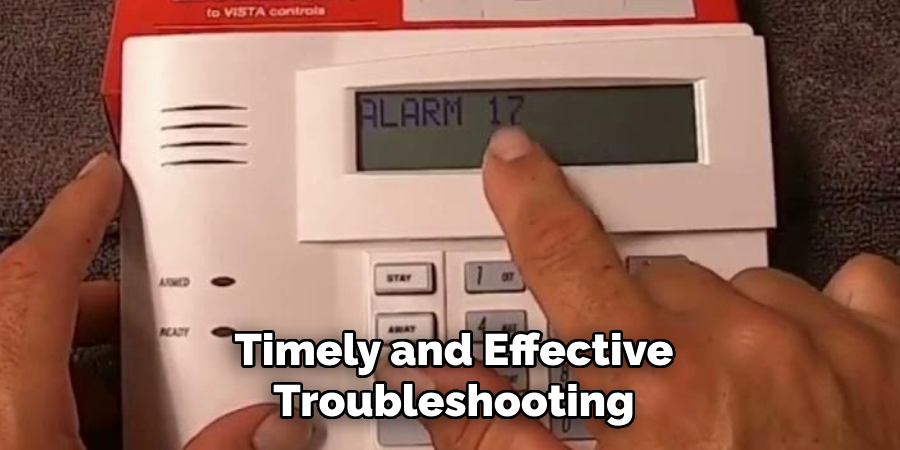
This condition often accompanies by a specific error message or code displayed on the keypad’s screen, indicating that access has been denied due to multiple incorrect code entries or other security protocols. Another indicator is the keypad emitting a continuous beep or flashing lights distinctively, signaling an error state or locked condition.
Additionally, attempts to arm or disarm the system resulting in no response or the system remaining in its current state, despite correct code entries, also suggest that the keypad is locked. Recognizing these signs early can prompt users to take the necessary steps to unlock their Honeywell alarm keypad and restore full system functionality.
Troubleshooting Potential Issues
When dealing with a locked Honeywell alarm keypad, there are several troubleshooting steps you can undertake before reaching out for professional help. First, ensure that the keypad is not simply unresponsive due to low battery power or a malfunctioning power supply, and replace batteries or check the power source as necessary.
If the keypad remains locked due to incorrect code entries, waiting for a predetermined lockout period to expire may grant access again. Normally, this duration is set by the system’s programming to prevent unauthorized access attempts.
Resetting your Honeywell system can also resolve keypad lockouts, especially those caused by system glitches or errors. To perform a system reset, you may need to locate the main control panel and disconnect the battery backup before turning off the power supply for a short period.
However, it’s essential to consult your system’s user manual before attempting this to avoid inadvertently triggering alarms or causing other system issues.
If the keypad is locked due to input errors, reviewing the user manual for specific error codes displayed on the keypad can provide insights on the issue and potential solutions.
Sometimes, reprogramming your keypad or access codes with assistance from your home security provider’s customer support may be necessary, especially if default codes have been compromised or if there is a hardware issue with the keypad itself.
Lastly, regular maintenance checks and firmware updates can prevent many common keypad lockout issues. Ensuring that your system is up-to-date and that all components are functioning correctly can greatly reduce the chances of unexpected lockouts, providing a more reliable and secure home security experience.
10 Methods How to Unlock Honeywell Alarm Keypad
1. Enter User Code:
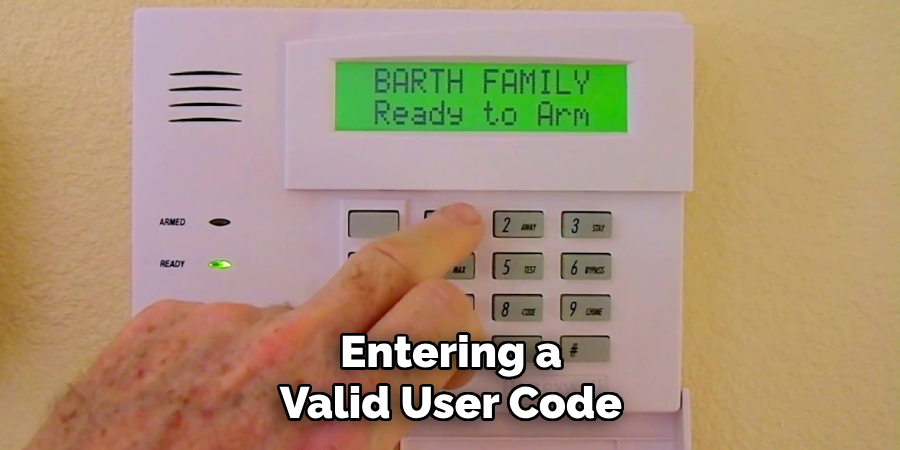
The most common method to unlock a Honeywell alarm keypad is by entering a valid user code. Approach the keypad and press the “Disarm” or “Unlock” button. Then, input your designated user code using the keypad’s numbered buttons. Once entered correctly, the keypad will display a confirmation message or beep to indicate successful unlocking. If the code is incorrect, the keypad may display an error message or sound a loud alarm.
There are several things to keep in mind when entering your user code on a Honeywell alarm keypad. First, make sure you are using the correct code for your designated account. Each individual with access to the system will have their own unique code assigned by the system administrator.
Another important factor to consider is the number of attempts allowed for entering a user code. Depending on your system settings, there may be a limit on the number of incorrect attempts before the keypad locks and requires a reset from the administrator.
2. Master Code Override:
If you’ve forgotten your user code or it’s not working, you can use the master code to unlock the Honeywell alarm keypad. Press the “Disarm” or “Unlock” button on the keypad, followed by the master code. This code is typically provided by the installer or programmed during initial setup. Upon successful entry, the keypad should unlock, allowing access to the system controls.
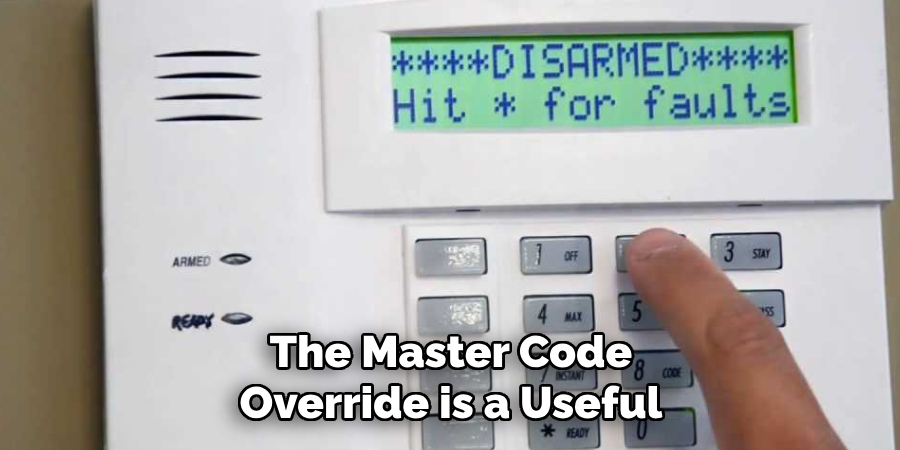
The master code override is a useful feature for situations where the user code is unavailable or not working. However, it should be used with caution as it bypasses any security measures put in place by the user code. It’s important to keep the master code confidential and only share it with trusted individuals who may need access to the system.
In addition to using the master code override, it’s important to regularly change both the user and master codes for added security. This can be done through the system settings or by contacting your alarm monitoring company. It’s also recommended to avoid using easily guessable codes, such as birthdates or sequential numbers.
3. Quick Arm/Disarm Feature:
Some Honeywell alarm keypads may have a quick arm/disarm feature that allows users to bypass the need for a code entry. Simply press the designated quick arm/disarm button on the keypad to unlock the system quickly. Be sure to check your keypad’s user manual or consult with the installer to verify if this feature is available and how to use it.
This feature can be especially useful in emergency situations where quick access to the alarm system is necessary. Additionally, it can also come in handy for households with multiple users who may have trouble remembering their individual codes.
However, while this feature may provide convenience and efficiency, it also poses some security risks. If the quick arm/disarm button is easily accessible or visible to unauthorized individuals, they may be able to easily deactivate the alarm system without needing a code. Thus, it is important to carefully consider the placement and availability of this feature in your home or business.
4. Remote Control Key Fob:
If your Honeywell alarm system is equipped with a remote control key fob, you can unlock the keypad remotely without entering a code. Simply press the designated disarm button on the key fob within the system’s operational range to unlock the keypad and disarm the system.
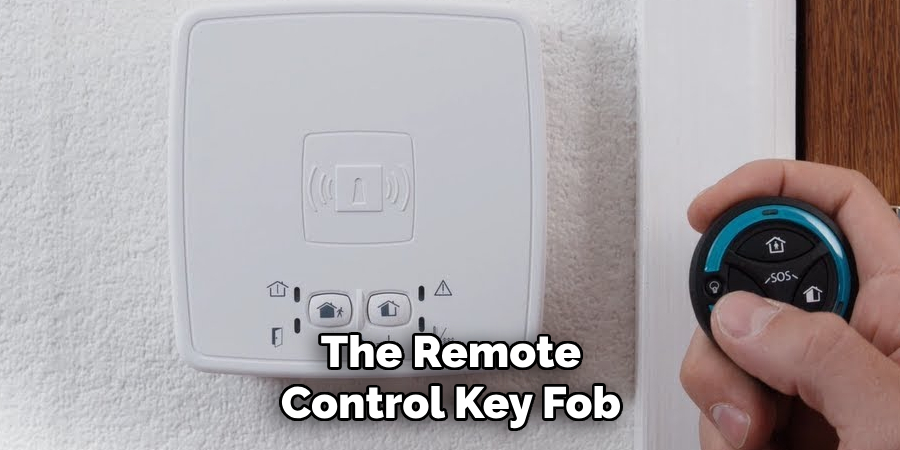
The remote control key fob also allows you to arm and disarm your system when entering or leaving your home, making it a convenient and efficient way to manage your alarm system. It is especially useful for those who have multiple entry points in their home, as you can easily arm or disarm the system from anywhere within range.
In addition to arming and disarming, some key fobs also have emergency buttons that can trigger a panic alarm in case of an emergency. This allows you to quickly call for help without having to go to the keypad or use your phone.
5. Bypassing Lockout Mode:
In some instances, the Honeywell alarm keypad may enter lockout mode after multiple unsuccessful code entry attempts or other security triggers. To bypass lockout mode, you may need to wait for a predetermined period or contact the monitoring service provider to reset the keypad remotely. However, there are alternative methods to bypass lockout mode without waiting or contacting the service provider.
One method is to use a master code or installer code to access the system. These codes are typically provided during installation and can override lockout mode. If you do not have access to these codes, you may be able to reset the keypad by disconnecting the power and reconnecting it after a few minutes.
Another method is to use the backdoor method, which involves entering a sequence of commands on the keypad to bypass lockout mode. However, this method may require some technical knowledge and should only be attempted if you are confident in your abilities.
6. Power Cycle the Keypad:
If the keypad is unresponsive or frozen, power cycling it may help unlock it. Disconnect the keypad from its power source by removing the batteries or unplugging it from the wall outlet. Wait for a few minutes before reconnecting the power source. Once powered back on, the keypad should reset and become responsive again.
If the issue persists, you may need to check the battery levels and replace them if necessary. If that does not solve the issue, try resetting the keypad by pressing and holding down the power button for at least 10 seconds. This will force a reboot of the system and may resolve any software issues causing the unresponsiveness.
In some cases, there may be physical damage to the keypad or its components that is causing the issue. In this case, it may be necessary to replace the keypad entirely. Contact your security system provider for further assistance in troubleshooting and potential replacement options.
7. Check for Error Messages:
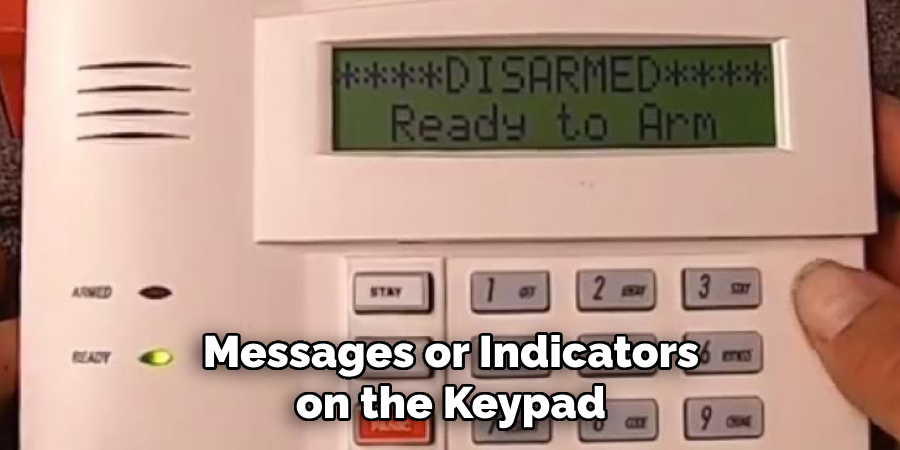
Sometimes, error messages or indicators on the keypad can provide clues about why it’s locked and how to unlock it. Refer to the keypad’s user manual or documentation to interpret any error messages displayed. Addressing the underlying issue may unlock the keypad automatically.
8. Reset to Factory Defaults:
As a last resort, resetting the keypad to its factory defaults may unlock it. This method erases all user-configured settings, including codes and preferences, so use it with caution.
Consult the keypad’s user manual for instructions on how to perform a factory reset, as the process may vary depending on the model. Once the keypad is reset, you will need to configure it again from scratch.
In addition to unlocking a locked keypad, resetting it to factory defaults can also be useful if you are experiencing technical issues with the device. By erasing all settings and starting fresh, you may be able to eliminate any bugs or glitches that were causing problems.
9. Contact Customer Support:
If you’re unable to unlock the Honeywell alarm keypad using any of the above methods, contact Honeywell’s customer support for assistance. Provide them with detailed information about the issue you’re experiencing, including any error messages or indicators displayed on the keypad, for prompt troubleshooting and resolution.
You can find the contact information for Honeywell’s customer support on their website, or you can call their toll-free number.
10. Replace the Keypad:
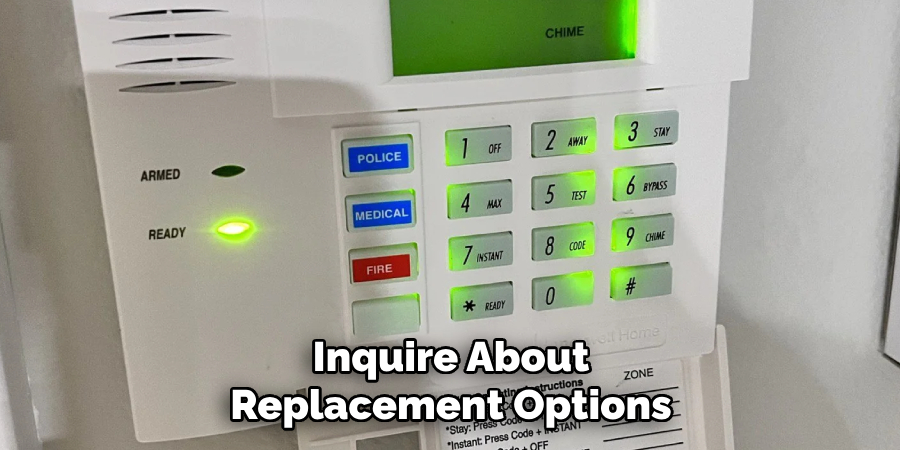
If the keypad is damaged or malfunctioning beyond repair, replacing it with a new one may be necessary. Contact Honeywell or your security system provider to inquire about replacement options and compatibility with your existing system. Follow the manufacturer’s instructions for installing the new keypad and configuring it with your system.
Replacement keypads may also offer additional features or customization options that were not available with your previous keypad. Take some time to familiarize yourself with these new features and settings to fully utilize the capabilities of your security system.
In addition, consider upgrading to a touchscreen keypad for a more modern and user-friendly interface. These touchscreens often offer larger display screens, integrated cameras, and other advanced features such as voice control. Be sure to check with your security provider for compatibility before making the switch.
Conclusion
In conclusion, understanding how to unlock a Honeywell alarm keypad is essential for homeowners to maintain the security and functionality of their alarm systems. By following the step-by-step guide outlined in this article, users can confidently navigate the process of unlocking their keypad, ensuring quick access and proper operation when needed.
It’s crucial to be familiar with the keypad’s functions and codes, as well as to practice security measures to protect access codes from unauthorized individuals. Regular testing and troubleshooting help ensure that the system functions optimally, providing users with peace of mind and reliable protection for their property.
With the ability to unlock the Honeywell alarm keypad mastered, homeowners can rest assured that their security system is ready to serve its purpose effectively whenever the need arises.
About
Safety Fic is a distinguished figure in the world of Diy design, with a decade of expertise creating innovative and sustainable Diy solutions. His professional focus lies in merging traditional craftsmanship with modern manufacturing techniques, fostering designs that are both practical and environmentally conscious. As the author of diy, Safety Fic delves into the art and science of Safety Fic-making, inspiring artisans and industry professionals alike.
Education RMIT University
(Melbourne, Australia) Associate Degree in Design (Safety Fic) Focus on sustainable design, industry-driven projects, and practical craftsmanship. Gained hands-on experience with traditional and digital manufacturing tools, such as CAD and CNC software.
Nottingham Trent University
(United Kingdom) Bachelor’s in diyfastly.com and Product Design (Honors) Specialized in product design with a focus on blending creativity with production techniques. Participated in industry projects, working with companies like John Lewis and Vitsoe to gain real-world insights.
Publications and Impact
In diy, Safety Fic his insights on indoor design processes, materials, and strategies for efficient production. His writing bridges the gap between artisan knowledge and modern industry needs, making it a must-read for both budding designers and seasoned professionals.
